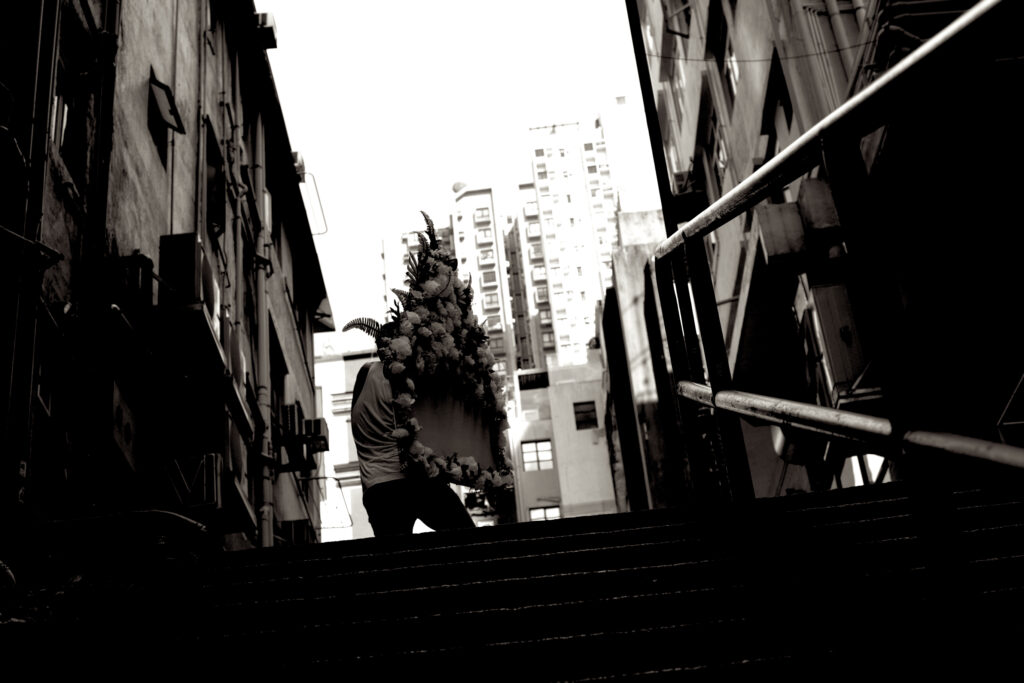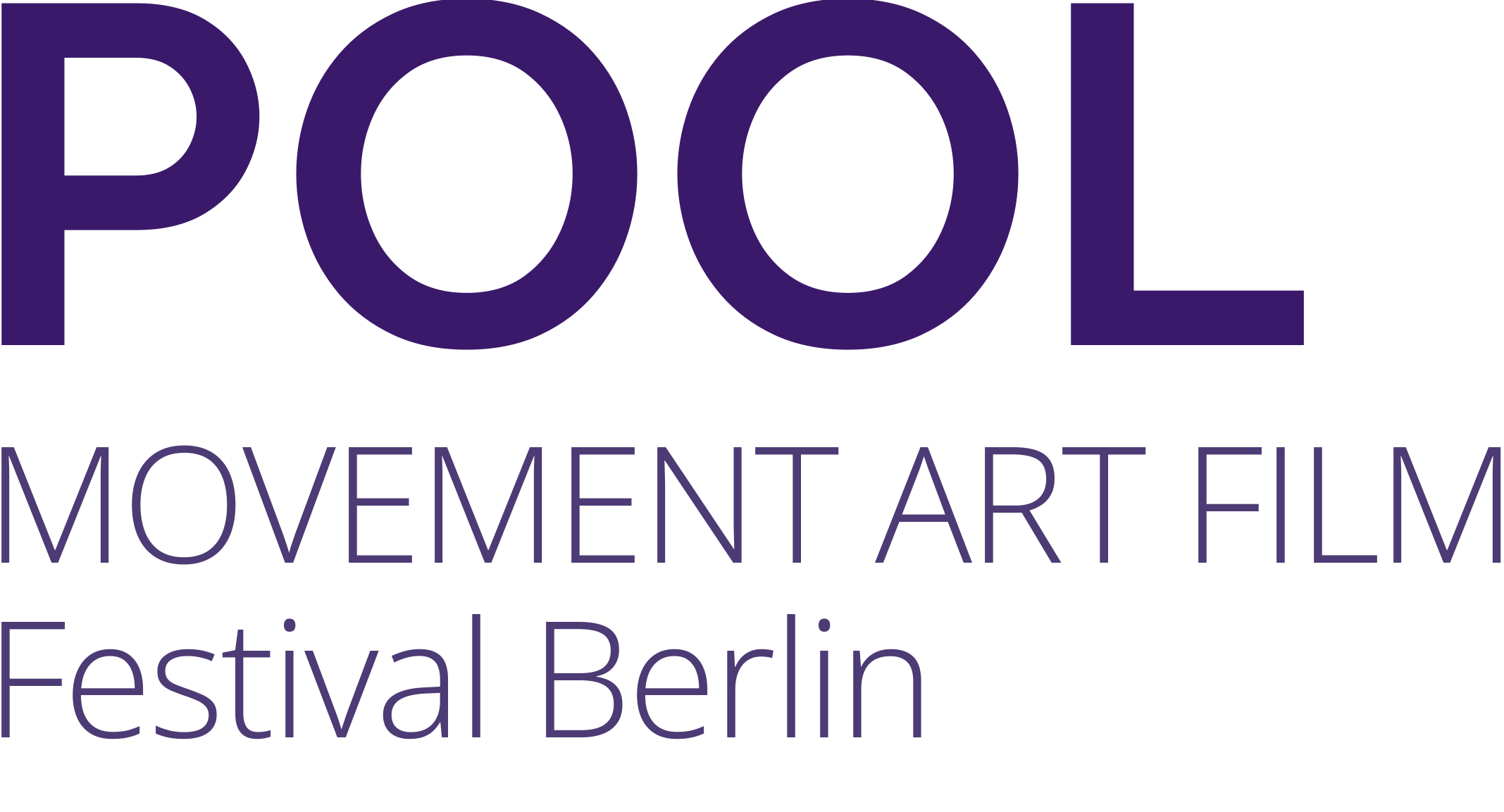Expanding imagination on what dance film can be and do – POOL dives deeper with Elysa Wendi
Elysa Wendi was invited to work as one of the guest curators for POOL 2024 festival edition. She brought to the festival selection the films Tear Inside, Looking for Charlie, How Did I End up Here, and Life Will Be Tragic If It Weren’t Funny. Next to working internationally with her own filmmaking practice and as a curator in diverse festivals, she runs the festival Jumping Frames in Hong Kong. Jumping frames was established in 2004, and Elysa has been working with the festival as guest curator since 2018, becoming the curator in 2021.
15.10.2024
Article by Silja Tuovinen
Images from the archive of Elysa Wendi
***
Currently living in Hong Kong, the Singaporean choreographer, dancer, filmmaker and curator Elysa Wendi is fascinated about movement. Before venturing into filmmaking, she danced as part of a dance company in Singapore for ten years. She has moved between countries, such as Malaysia, Indonesia, Singapore and Thailand – all with their entirely own textures, movement, language and rhythms of life. These listed elements of places inspire Elysa in her artistic work and impact where her eye goes to when viewing films. Her own films, departing from dance thinking and expanding beyond, have been shown not only at dance film festivals, but awarded in documentary film festivals, with her latest work Room 404 also having been shown at 74th Berlinale Forum Expanded this year.
Elysa has an expanded imagination on what dance film can be and do, eyeing out particularly a documentary view: “perhaps dance film is one other possibility in an expression of truth, because it’s not spoken in an explicit way like in a documentary or a narrative film. We can transcend and we can transpose. We can process the body in a way that we speak something without having to directly say it” she notes, offering an intriguing view on dealing with sensitive topics and forbidden text.
Movement is all around
Elysa Wendi graduated as a dancer and choreographer in 1998 from Lasalle College of the Arts in Singapore and continued to work as a dancer for ten years in a The Arts Fission Company in Singapore, retiring in 2008. “I had the chance to work with company dancers, I had a studio space prepared for me. Then I left and I was completely quite lost, to be honest. I just thought that I only have myself and my body.” To tackle feeling lost Elysa bought a video camera and started documenting herself. “At that time, I lived in Singapore, and from my windows you could see the opposite house. In the frame it was not just me, but also someone at the opposite window doing something – that was quite amusing.” It was not just Elysa’s body that was moving, but also things in the environment around. This is a core, early realisation for Elysa in her filmmaking practice, visible in her works still today.
Choreography is not just limited to a dancer, because also in objects and in the camera movements there is choreography.
After retiring from the dance company Elysa went to teach dancing in a film school, leading to three very different dance film projects with her students. Two of the films Void Decked and Flux were selected to Jumping Frames which was the first time for Elysa to see her own film in a cinema. While the films had success Elysa realised there was a lot about film language that she did not yet understand. She decided to join a film school for four years, with her films gaining success and travelling about. “As the films and I travelled, I managed to see many diverse films from different genres. I understood the possibility of cinema to also include aliveness, a performative kind of element in a cinema presentation. It really enriched my imagination on what dance film could be. Choreography is not just limited to a dancer, because also in objects and in the camera movements there is choreography.” Movement is all around.

Movement of the universe of the film
Dance functions in a moving universe wider than itself. It functions in the “real world” with its very real situations and elements. For Elysa filmmaking is about paying attention to and composing in this already existing reality and finding ways to emphasise its content and meanings – paying attention to geographical traces. “How do I understand this location and what is its meaning in connection to my intervention? It is no longer just about dance only. Choreography becomes more layered.”
Elysa inspires to look around and observe everything that is in movement in parallel with each other. “The movement of the universe of the film is more than just the dancer. For example, in Tsai Ming Liang ’s film ‘Journey to the West’, you can see a monk who accentuates slowness which is creating a big contrast to the traffic in the background, foreground, and mid-ground. You can see a car crossing and people at the market. All those elements are movement and choreography too – but they are already existing. They give content and meaning to what this space is about. They are not decoration or a set, but a real situation –that element excites me!” Russian filmmaker master Andrzej Tarkovsky has noted: “imagination is less rich than reality.”
There are many subconscious things that come out of me.
So, a lot of the time my work is not very linear.
Elysa has been moved forward in filmmaking by her curiosity. “I am not just focusing on the form of film, but for me it is more about what I want to say, and then what form fits that message. Because of the past experience as a choreographer, I make films very differently than a filmmaker who went to a film school.” Elysa celebrates the different, embodied lens that she carries into her filmmaking. “There are a lot of things very much embodied in my body from the places where I have lived. There are many subconscious things that come out of me. So, a lot of the time my work is not very linear.” Deriving from her body and her memory, Even Elysa’s filmmaking process itself has an emphasised movement.

Curating (dance) films
Next to her filmmaking, Elysa works as a guest and co-curator for multiple festivals such as Macau Rollout Dance Film Festival and Indonesia Bertutur – Layarambha Dance Film Festival. The festivals naturally have their own agenda, aesthetics, purpose and criteria. “I am very personal with my own filmmaking, but as a curator I don’t insist on my own taste or aesthetic preference. I have to look at the bigger picture. A lot of the time it is not really just about the form of dance filmmaking, but more about how the film connects to the bigger theme.” Jumping Frames Festival is a bit of a different case, with the support of the artistic director of the City Contemporary Dance Company, of which Jumping Frames is funded and presented by, Elysa has the freedom to develop the festival from her own perspective. “We are trying to reach out to all different dance genres and film genres. We try to open up to the film industry, the visual industry, the literature, music, and a wider scope. We make a big effort on audience development especially. Therefore, the selection of films is very diverse and connects to all different sectors and disciplines.”
A beloved child has many names, and the same goes for the term “dance film” which gets pronounced and articulated in many ways in the field. Elysa does not use the word dance film often because sometimes it can be very limiting. She notes: “POOL used to also be called dance film festival before, but now it is Movement Art Film Festival. Same way Jumping Frames has changed from its first inception when it was called Jumping Friends Video Dance Festival, and now it’s a Movement Image Festival.” Elysa points out this deviation from the term “dance film” as a visible trend. “Sometimes with dance film it happens, that the people from the film industry are less interested in them because the films are more focus on the expression of dance form and performance, and not so much considering the filmic form and its content. And then again, the dance people would not want the film people to interrupt their dance.Somehow the two mediums need mediation to encounter each other for further unknown in their new creative creations.”
I personally think the intersection (between dance and film) is the most interesting, not so much just one serving the other.
Elysa finds hopefulness in the trend of expanding the notion and terminology around dance film, first and foremost because it enriches accessibility and blurs boundaries between film genres. “I personally think the intersection (between dance and film) is the most interesting, not so much just one serving the other” Elysa shares. She points out how film grants are usually wildly bigger for “regular films” in comparison to dance films, but dance films still tend to compete with them in terms of production value. This is the reason why Elysa feels that “dance film had better chances in the early days”. Days, when perhaps experimentation was more pronounced over production value or industry standards.
Jumping Frames festival carries as a value experimentation, difference and diversity. Talking with Elysa opens up to view how many dance film festivals are highly important platforms for filmmaking that takes experimental and genre-bending perspectives. The festivals are sometimes a place for films that do not fit for instance a commercial filmmaking scene or cannot otherwise find their place in the world. Both in her artistry and in her curatorial work Elysa Wendi is expanding imagination on what dance film can be and do, as well as where it could belong in the industry and world as a whole.

Elysa Wendi is a filmmaker, artist, and curator based in between Hong Kong and Singapore. Preoccupied with the abstraction of memory from place, time and biographical traces, Wendi explores these themes in her live and filmic works. Her nomadic childhood growing up in between lands of South East Asia has an impactful influence and consciousness on her practice and most of her works. Straddling the amorphous boundaries between borders, languages, and histories, Wendi works through hybrid documentary projects, audio-visual essays, and meta-choreographic rituals to explore the auto-fictional narratives of bodies and movements.In 2015, She co-founded Cinemovement, a platform facilitating trans-disciplinary creations through a laboratory, with Singaporean film producer Jeremy Chua. Her artistic accolades include winning Best Experimental Film at the 2018 South Taiwan Film Festival, Best Documentary at Hong Kong ArtHouse Film Festival 2020 and the Gold Award IFVA Hong Kong 2023 open category with her film As I Imagine My Body Moving. Her latest film Room 404 was screened in 74th Berlinale Forum Expanded 2024. Her involvement as the curator of the ‘Jumping Frames – Hong Kong International Movement-image Festival’ further highlights her passion for promoting and showcasing movement-focused films. Overall, Elysa Wendi’s artistic journey and achievements demonstrate her commitment to bridging the worlds of dance, film, and curatorial practice.
Elysa Wendi in short:
*Singaporean dance artist, filmmaker and curator
*Currently lives in Hong Kong
*Curator of Jumping Frames Festival since 2021
*Co-founded CINEMOVEMENT in 2015
*Her latest film Room 404 was shown in 74th Berlinale Forum Expanded 2024
*Awarded best experimental film in South Taiwan Film Festival 2017
*Best Documentary at Hong Kong ArtHouse Film Festival 2020
*Awarded Gold Award , IFVA Hong Kong 2023 open category
*Guest curator at festivals such as POOL – Movement Art Film Festival Berlin, Macau Rollout Dance Film Festival, Indonesia Bertutur – Layarambha Dance Film Festival.
*cinemovement.sg
